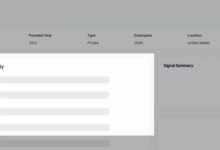PLG Based CRM: 7 Powerful Benefits You Can’t Ignore
Ever wondered how some companies effortlessly scale their customer relationships? The secret might lie in a PLG based CRM—where product-led growth meets smart customer management.
What Is a PLG Based CRM?

A PLG based CRM combines the principles of Product-Led Growth (PLG) with Customer Relationship Management (CRM) systems to create a seamless, user-driven experience. Unlike traditional CRMs that rely heavily on sales teams to drive engagement, a PLG based CRM empowers users to discover value directly from the product itself. This shift not only reduces dependency on human intervention but also accelerates customer onboarding and retention.
Defining Product-Led Growth (PLG)
Product-Led Growth is a go-to-market strategy where the product itself is the primary driver of customer acquisition, conversion, and expansion. Instead of relying on aggressive sales tactics or extensive marketing campaigns, companies using PLG focus on building an intuitive, self-serve product experience that naturally guides users toward realizing its value.
- Users sign up and start using the product with minimal friction.
- Value is demonstrated quickly through in-app guidance and feature discovery.
- Expansion happens organically as users upgrade or purchase additional features.
Companies like Slack, Notion, and Zoom have successfully leveraged PLG to scale rapidly without massive sales teams. According to ProductLed, organizations embracing PLG grow 2–3x faster than those relying solely on sales-led models.
How CRM Fits Into the PLG Model
Traditionally, CRM systems like Salesforce or HubSpot are designed to support sales teams by tracking leads, managing pipelines, and automating outreach. However, in a PLG based CRM, the focus shifts from external sales efforts to internal product usage data. The CRM integrates directly with the product to capture behavioral insights—such as feature adoption, login frequency, and user engagement—and uses this data to trigger personalized interactions.
“In a PLG world, the product is the salesperson. The CRM becomes the coach that helps the product guide users to success.”
This integration allows businesses to identify high-intent users, predict churn risks, and deliver timely support—all without requiring a sales rep to make the first move. For example, if a user spends significant time exploring premium features, the PLG based CRM can automatically prompt them with a trial upgrade offer.
Key Features of a PLG Based CRM
Not all CRMs are built to support a product-led strategy. A true PLG based CRM must include specific capabilities that align with user autonomy, data-driven insights, and automated nurturing. These features differentiate it from legacy systems designed for sales-led approaches.
Real-Time Product Usage Tracking
One of the defining characteristics of a PLG based CRM is its ability to ingest and analyze real-time product usage data. This includes metrics such as daily active users (DAU), session duration, feature adoption rates, and event-based triggers (e.g., completing a setup wizard).
- Tracks user behavior across web, mobile, and desktop platforms.
- Integrates with analytics tools like Mixpanel, Amplitude, or Heap.
- Maps user actions to lifecycle stages (e.g., onboarding, activation, retention).
For instance, if a user completes five key actions within the first week, the system can classify them as “activated” and trigger a success email or invite them to a community forum. This level of granularity ensures that engagement efforts are timely and relevant.
Automated User Segmentation
Segmentation in a PLG based CRM goes beyond basic demographics. It uses behavioral data to group users based on their interaction patterns. This enables hyper-personalized communication and targeted interventions.
- Creates segments like ‘power users,’ ‘at-risk users,’ or ‘feature explorers.’
- Triggers automated workflows when users enter or exit a segment.
- Syncs segments with email platforms (e.g., Mailchimp) or in-app messaging tools (e.g., Intercom).
For example, a SaaS company might notice that users who integrate with Google Calendar within three days have a 70% higher retention rate. The PLG based CRM can then prioritize onboarding flows that encourage calendar integration for new signups.
Self-Serve Onboarding Workflows
Unlike traditional CRMs that rely on manual follow-ups, a PLG based CRM automates the entire onboarding journey. From the moment a user signs up, the system guides them through value realization using contextual nudges, tooltips, and milestone-based checklists.
- Delivers in-app messages based on user progress.
- Offers video tutorials or knowledge base articles at critical decision points.
- Uses AI-driven recommendations to suggest next steps.
According to research by Gainsight, companies with strong onboarding automation see up to 50% higher user activation rates. A PLG based CRM turns onboarding from a passive process into an active growth engine.
Benefits of Implementing a PLG Based CRM
Adopting a PLG based CRM isn’t just a technological upgrade—it’s a strategic shift that can transform how your business scales. From reducing customer acquisition costs to improving retention, the advantages are both measurable and sustainable.
Reduced Customer Acquisition Cost (CAC)
Traditional sales-led models require significant investment in sales teams, cold outreach, and demo scheduling. In contrast, a PLG based CRM lowers CAC by enabling users to experience value independently.
- Fewer sales reps needed per customer.
- Higher conversion rates from free to paid tiers.
- Scalable growth without proportional increases in headcount.
A study by OpenView Partners found that PLG companies achieve CAC payback periods that are 40% shorter than their sales-led counterparts. By leveraging the product as the primary growth lever, businesses can scale efficiently even with limited resources.
Improved User Retention and Engagement
Retention is often the biggest challenge for SaaS companies. A PLG based CRM tackles this by continuously monitoring user health and intervening before disengagement occurs.
- Sends re-engagement emails to inactive users.
- Offers in-app incentives for returning customers.
- Identifies and addresses friction points in the user journey.
For example, if a user stops logging in after the second week, the system can trigger a personalized message offering help or highlighting underused features. This proactive approach can reduce churn by up to 30%, according to data from Customer.io.
Accelerated Time-to-Value (TTV)
In a competitive market, speed matters. The faster a user experiences value, the more likely they are to stick around. A PLG based CRM shortens the time-to-value by guiding users directly to high-impact features.
- Uses behavioral triggers to surface relevant functionality.
- Personalizes onboarding paths based on user role or industry.
- Measures TTV as a core KPI and optimizes accordingly.
Companies like Dropbox and Calendly have mastered this by designing onboarding flows that get users to their “aha moment” in under two minutes. A PLG based CRM makes this repeatable and scalable across thousands of users.
How PLG Based CRM Differs From Traditional CRM
While both PLG based CRM and traditional CRM aim to improve customer relationships, their philosophies, data sources, and operational models are fundamentally different. Understanding these distinctions is crucial for choosing the right approach.
Data Source: Product Usage vs. Sales Interactions
Traditional CRMs rely on data generated from sales calls, emails, and meetings. This information is often subjective and delayed. In contrast, a PLG based CRM pulls objective, real-time data directly from the product.
- Sales CRM: Tracks lead status, call outcomes, and deal size.
- PLG based CRM: Tracks login frequency, feature usage, and session duration.
- Outcome: More accurate prediction of user intent and churn risk.
This shift from opinion-based to behavior-based insights allows for more precise decision-making. For instance, a user who hasn’t responded to emails but is actively using advanced features may not be at risk of churn—something a traditional CRM might miss.
Engagement Model: Self-Serve vs. Sales-Led
In a traditional CRM, engagement is initiated by a sales representative. The process typically follows a linear path: lead → demo → negotiation → close. A PLG based CRM flips this model by letting users drive their own journey.
- Sales-led: Requires human touchpoints at every stage.
- Product-led: Users explore, adopt, and upgrade independently.
- CRM role: Supports rather than drives the process.
This self-serve model scales better and reduces bottlenecks. As noted by Forethought.ai, companies with self-serve onboarding can handle 10x more users with the same support team.
Success Metrics: Activation Rate vs. Conversion Rate
Traditional CRMs measure success through conversion rates, deal velocity, and average contract value. A PLG based CRM, however, prioritizes activation rate, feature adoption, and net promoter score (NPS).
- Conversion rate: Percentage of leads that become paying customers.
- Activation rate: Percentage of users who reach a predefined “aha moment.”
- Impact: Focuses on long-term value rather than short-term sales.
For example, a user might not convert immediately but could become a high-value customer after six months of organic usage. A PLG based CRM recognizes this trajectory and nurtures it accordingly.
Top PLG Based CRM Platforms in 2025
As demand for product-led strategies grows, several platforms have emerged to support PLG based CRM implementations. These tools combine CRM functionality with deep product analytics and automation capabilities.
HubSpot with PLG Add-Ons
While HubSpot started as a sales and marketing CRM, it has evolved to support PLG strategies through integrations with product analytics tools and custom workflows.
- Syncs with Mixpanel and Amplitude for usage data.
- Offers lifecycle stages tailored to product-led funnels.
- Enables automated email sequences based on user behavior.
HubSpot’s flexibility makes it a popular choice for companies transitioning from sales-led to hybrid models. Learn more at HubSpot.com.
Intercom as a PLG CRM
Intercom is one of the most prominent PLG based CRM platforms, designed specifically for product-led businesses. It combines messaging, helpdesk, and product tours into a unified system.
- Tracks user behavior and triggers in-app messages.
- Offers AI-powered bots for instant support.
- Provides playbooks for onboarding, engagement, and expansion.
Companies like Shopify and Uber have used Intercom to scale their user support while maintaining high engagement. Visit Intercom.com to explore its PLG features.
Pendo for In-App Guidance
Pendo specializes in capturing product usage data and turning it into actionable insights. While not a full CRM, it integrates seamlessly with CRM systems to power PLG strategies.
- Records user sessions and identifies drop-off points.
- Creates in-app surveys to gather feedback.
- Builds user segments for targeted campaigns.
Pendo’s strength lies in its ability to visualize the user journey and optimize it for activation. More information is available at Pendo.io.
Implementing a PLG Based CRM: Step-by-Step Guide
Transitioning to a PLG based CRM requires more than just installing new software. It involves rethinking your customer journey, aligning teams, and setting up the right infrastructure.
Step 1: Define Your “Aha Moment”
The “aha moment” is the point at which a user realizes the core value of your product. Before implementing a PLG based CRM, you must clearly define what this looks like for your business.
- Analyze usage data from your most loyal customers.
- Identify common behaviors among retained users.
- Create a milestone (e.g., sending first message, completing setup) that signals activation.
For example, Slack defines its aha moment as a team sending 2,000 messages. Once identified, your PLG based CRM can focus on guiding users to this milestone.
Step 2: Integrate Product and CRM Data
A PLG based CRM is only as good as the data it receives. You’ll need to connect your product analytics platform (e.g., Amplitude, Mixpanel) with your CRM (e.g., HubSpot, Salesforce).
- Use APIs or middleware like Zapier to sync data.
- Map key events (e.g., login, feature use) to CRM fields.
- Ensure data privacy and compliance (GDPR, CCPA).
This integration enables the CRM to respond intelligently to user actions. For instance, a user who completes onboarding can be automatically tagged as “activated” and moved into a nurture campaign.
Step 3: Design Automated User Journeys
With data flowing in, the next step is to design automated workflows that guide users based on their behavior.
- Create onboarding sequences for new users.
- Set up re-engagement campaigns for inactive accounts.
- Build expansion paths for power users (e.g., upgrade prompts).
Tools like Customer.io and Braze excel at this type of behavioral automation. These journeys should be continuously tested and optimized using A/B testing.
Challenges and Pitfalls of PLG Based CRM
Despite its advantages, implementing a PLG based CRM comes with challenges. Organizations must be aware of these pitfalls to avoid costly mistakes.
Data Silos and Integration Complexity
One of the biggest hurdles is breaking down data silos between product, marketing, and sales teams. Without seamless integration, a PLG based CRM cannot function effectively.
- Different departments may use incompatible tools.
- Data latency can delay automated responses.
- Manual data entry defeats the purpose of automation.
Solution: Invest in a centralized data warehouse (e.g., Snowflake, BigQuery) and use integration platforms like Segment or RudderStack to unify data streams.
Over-Automation and User Fatigue
While automation is a strength of PLG based CRM, too much of it can overwhelm users. Bombarding them with messages, pop-ups, and emails can lead to frustration and churn.
- Users may disable notifications or ignore in-app prompts.
- Poorly timed messages feel intrusive rather than helpful.
- Generic content fails to resonate with diverse user segments.
Solution: Implement frequency capping, allow user preferences, and use AI to personalize message timing and content. As Drift emphasizes, “Smart automation respects the user’s attention.”
Resistance from Sales Teams
In organizations with established sales cultures, shifting to a PLG based CRM can create tension. Sales reps may feel sidelined or fear losing control over customer relationships.
- Sales teams may resist sharing leads with the product team.
- Commission structures may not align with product-led conversions.
- Lack of visibility into user behavior can cause mistrust.
Solution: Involve sales early in the PLG strategy, redefine incentives, and provide dashboards that show how the PLG based CRM supports their goals. Transparency and collaboration are key.
Future Trends in PLG Based CRM
The evolution of PLG based CRM is far from over. Emerging technologies and changing user expectations are shaping the next generation of customer management systems.
AI-Powered Predictive Engagement
Artificial intelligence is enabling CRMs to predict user behavior before it happens. By analyzing historical data, AI can forecast which users are likely to churn, upgrade, or need support.
- AI models identify patterns invisible to humans.
- Predictive scoring prioritizes high-intent users.
- Chatbots deliver proactive assistance based on predicted needs.
For example, an AI-powered PLG based CRM might detect that users who watch a tutorial video are 3x more likely to convert—and automatically recommend the video to similar users.
Embedded CRM Functionality
Future PLG based CRMs won’t be standalone tools—they’ll be embedded directly into the product. This means CRM capabilities like messaging, feedback collection, and user segmentation will live inside the app itself.
- Reduces context switching for users.
- Enables real-time interventions without leaving the product.
- Improves data accuracy by eliminating sync delays.
Platforms like Appcues and Chameleon are already pioneering this trend, offering in-product experiences that double as CRM touchpoints.
Privacy-First Personalization
As data privacy regulations tighten, PLG based CRMs must balance personalization with compliance. The future lies in zero-party data—information users willingly share—and on-device processing.
- Ask users for preferences instead of inferring them.
- Use anonymized data for trend analysis.
- Offer clear opt-in and opt-out mechanisms.
Companies that respect user privacy will build stronger trust and loyalty, giving them a competitive edge in the PLG space.
What is a PLG based CRM?
A PLG based CRM is a customer relationship management system designed to support product-led growth strategies. It uses product usage data to automate user engagement, drive onboarding, and predict customer behavior—reducing reliance on traditional sales teams.
How does a PLG based CRM reduce customer acquisition costs?
By enabling users to discover value independently through self-serve onboarding and in-app guidance, a PLG based CRM minimizes the need for large sales teams, lowering overall customer acquisition costs while scaling efficiently.
Can a PLG based CRM work for enterprise customers?
Yes, but it often requires a hybrid model. While enterprise sales still involve human interaction, a PLG based CRM can streamline onboarding, improve adoption, and identify expansion opportunities within existing accounts.
What are the best tools for building a PLG based CRM?
Popular tools include Intercom, Pendo, HubSpot (with integrations), and Customer.io. These platforms combine behavioral analytics, automation, and messaging to support product-led growth strategies.
How do I measure the success of a PLG based CRM?
Key metrics include activation rate, time-to-value, feature adoption, churn rate, and net revenue retention. These indicators reflect how effectively the CRM helps users realize value and stay engaged with the product.
Adopting a PLG based CRM is more than a technology upgrade—it’s a strategic shift toward user empowerment and scalable growth. By leveraging product usage data, automating engagement, and aligning teams around customer success, businesses can create a self-sustaining growth engine. While challenges like data integration and team resistance exist, the long-term benefits in reduced CAC, improved retention, and faster time-to-value make it a compelling choice for modern SaaS companies. As AI and embedded experiences shape the future, the PLG based CRM will become even more intelligent, proactive, and integral to customer success.
Further Reading:


